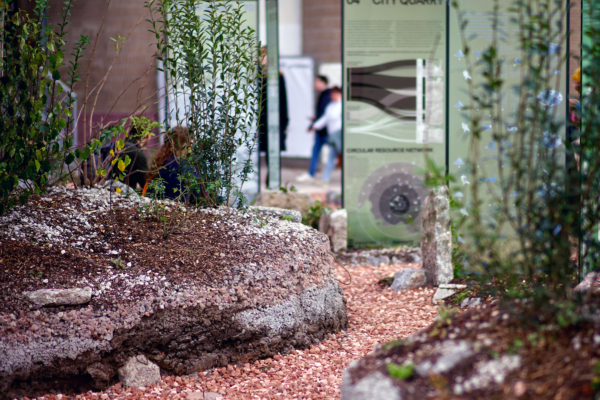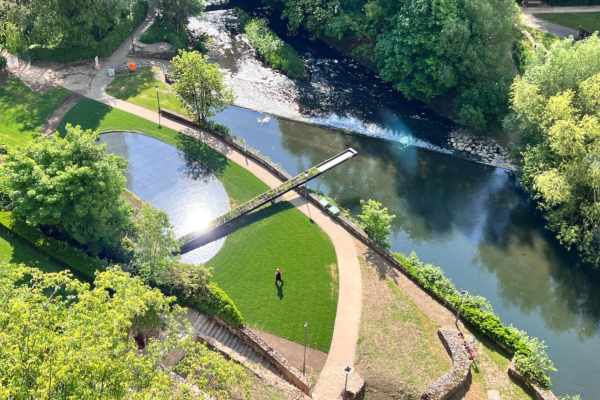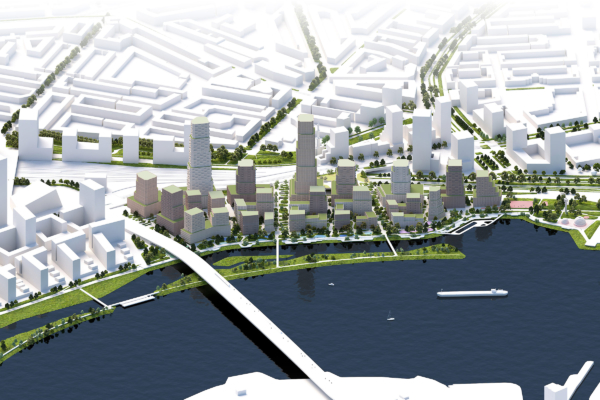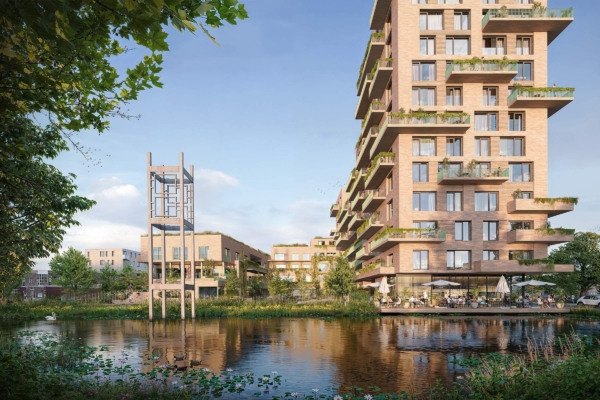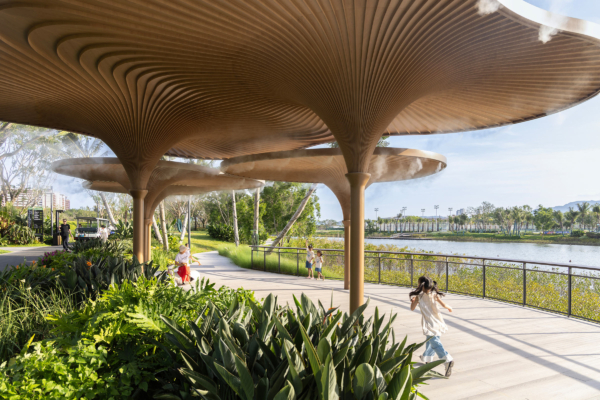Heat stress in the city
Heat stress is becoming increasingly common in Rotterdam due to climate change tendencies and the heat island effect, which traps heat and leads to higher temperatures. Heat stress is most predominant in the Zuid area, between Stadionpark and Zuiderpark. As Feyenoord stadium and Rotterdam-Zuid train track are one of the hottest areas in the city, specific trees and greenery will be planted to reduce heat stress. More trees and smarter green use of paving places can provide cooling in head stress city areas. Robust green corridors along the Maas, parks, and outdoor spaces can further circumvent potential overheating during the summer.
Oostflank - Alexander to Zuidplein
Rotterdam, NL
| Type | Development vision and strategy |
| Research | 2021-2023 |
| Location | Rotterdam (NL) |
| Size | 1,200 ha |
| Client | Municipality of Rotterdam |
| I.c.w. | Studio for New Realities, Goudappel, Stec Groep |
| Team | Peter Veenstra, Marit Schavemaker, Martin Garcia Perez, Eelkje Pries, Boya Zhou, Agostino Bubbico, Laura Moca, Simon Verbeeck |

City developments require greener solutions and spaces. Imagine a vibrant scenic riverside park along the North and South Rotterdam banks, accessible cycling and walking routes across junctions, reduced traffic space through added greenery and programmed plinths of adjacent buildings, and greener areas across the city with recreational infrastructures for all. Research shows that the pandemic accelerated a green urban culture change: city residents have greater appreciation for nature, make more use of public spaces and attach more importance to a healthy lifestyle. This is a precondition for improving the quality of existing parks and green spaces. Rotterdam’s Oostflank aims to become a unified necklace of dense urban districts with different characters, connecting Alexanderknoop-Zuidplein through 12000-hectares with 30 000 homes, strengthening the North and South banks, and improving the visual and physical connection of the Rotterdam East to its city center.
Over the past two years, the Studio for New Realities, LOLA Landscape Architects, and mobility experts Goudappel worked with the Rotterdam Municipality to create a strategic development vision for the East to South Rotterdam city zone. At every scale, the Rotterdam Alexanderknoop-Zuidplein project addresses the interest of people, animals, and nature. LOLA emphasizes the urgent need for green utility space in the East-to-South Rotterdam connection. In addition to better parks and public areas, green spaces are needed to help adverse the effect of climate change.
The design development vision and strategy is currently open for public consultation. The city council is expected to decide on a possible revision by the end of 2023.

Heat stress map
Biodiversity
Nature-inclusive city mindset is important at every scale. By establishing or improving connections between urban and countryside nature, there are opportunities for plants and animals to interact with their counterparts outside the city. To better connect the different ecological hotspots, the Alexanderknoop-Zuidplein zone will introduce numerous urban habitat types and focus on a number of target species.

Biodiversity map
Water and flood risk
Rotterdam is built on a mosaic of polders and riverbanks, which still define the boundaries within which water management is regulated. In each of these water management areas, the system must be able to withstand both prolonged rainfall and short-lived peak downpours and be prepared for the increasingly extreme weather situations that will occur in the future. This requires adjustments to the water system and layout of the urban area.

Water and flood risk map


Layer 1: Landscape and public space

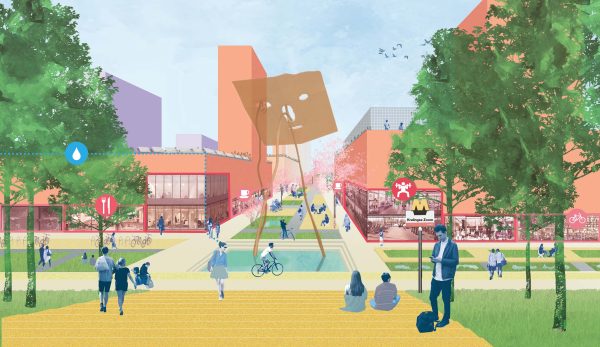
Layer 2: Urban network and mobility


Layer 3: Program of living, working, and facilities

Rotterdam Alexander sport campus oost
